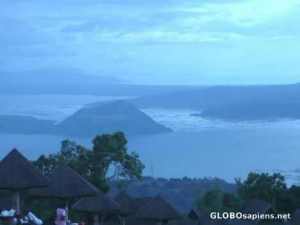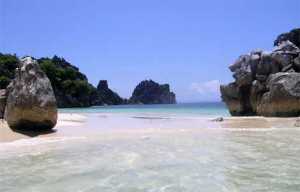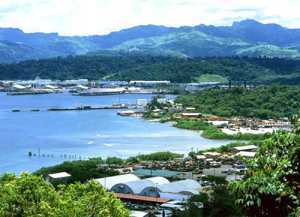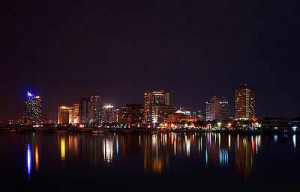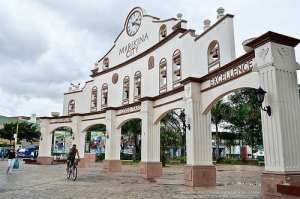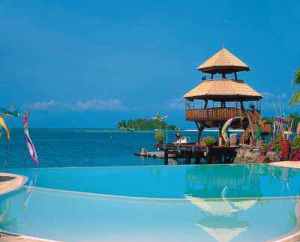Filippine
Top 20 Livable Philippine Cities of 2012
The result of this study is UNOFFICIAL and is intended for a SCHOOL research only. We will NEVER claim that this is absolute nor reflect actual living conditions of cities included in this list. We think it’s a good share so we posted it in this blog site. Criticisms are welcome but derogatory remarks against the site will be deleted. People who won’t accept the result, better get out and CREATE your own study including your OWN methodology and indicators. All comments are now moderated.
This study considered all the 122 cities of the Philippines – has undergone thorough research and gathering of data and analysis. The methodology used to determine the livability of each city was based but not totally on the European Intelligence Unit procedure. Like the EIU, the concept of this study was to determine which locations in the Philippines provide the “best living conditions”. Five broad categories were considered for the computation and this are: Stability (25%), Culture and Environment (25%), Healthcare (20%), Education (10%) and Infrastructure (20%). Each category contains indicators, and we included as many as possible, to make the computed data more solid. Aside from the EIU provided indicators, (which can be viewed in their website) we also added the following into consideration: financial performance, population density, availability of public and private hospitals, availability and quality of public health service, environmental conditions, availability of sports and development programs, calamity-safety index, tourist attractions, cultural and commercial ties, availability of public and private educational sectors including their performances.
Quantitative variables came from the external data sources which were based from the reports released by the following government agencies: National Statistics Office, Philippine Statistical Coordination Board, IPRSD – Planning Service of DPWH, PAG-ASA, Philippine Volcanology and Seismology, Department of Education, Bureau of Secondary Education of Dep-Ed, Professional Regulation Commission and the Commission on Audit. As much as possible, qualitative aspects that requires polls and interviews were given with statistical counterpart to quantify the required indicator.
Only the top 20 cities that received the highest rating will be presented here. Generally, as you go along the list, you will notice the minute differences in the ratings but technically due to extensive indicators considered in the calculation – a 0.05 difference in the ratings is a big factor and can differentiate which city performed best among the rest.
20 . Tagum City - 80.657
Serves as the provincial capital of Davao del Norte, Tagum City is a first class city and one of the fastest growing city in Mindanao. It was cited as one of the 20 most viable and most competitive business sites in the Philippines in 2005 by the Philippine Cities Competitiveness Ranking Project. It is becoming a bustling center of culture, commerce, health services, and entertainment in the Davao region. Tagum is predominantly an agricultural area with a mixture of urban city stature. It was dubbed as the “Palm Tree City of the Philippines” and the ” Music Capital of Mindanao. With its rapid urbanization, improvement of transportation, infrastructure and public facilities, rise of more businesses and improvement of lives of people, Tagum City managed to secure a spot in this list.
19. Tagaytay City – 81.663
The only non-first class city in the list is a component city of the province of Cavite and one of the most popular tourist destination in the country due to its beautiful scenery and relaxing climate. It provides the iconic view of the Taal Volcano island viewable in any point of the city. The city have several tourist establishments providing food and accommodations, some with scenic views of the Taal Lake and Volcano. Taal is a lake with a volcano with a lake within, and an island in the middle of that small lake. It amassed a total rating of 81.66 due to its liveable environment and excellent public health programs. The city is a recipient of Presidential Healthcare Award for giving a consistent and quality healthcare for the public.
18. Muntinlupa City – 81.868
Popularly known as the location of the national penitentiary and also home to some of the best commercial establishments in the Manila metropolis. It is the location of Ayala Alabang Village, one of the country’s biggest and most expensive residential communities, where many of the wealthy and famous live. Alabang catapulted its mother city in progress due to its growing investments and growing infrastructures. Recently, it acquired the status of “Most Competitive City” and the “Most Improved City” of the Philippines. It is the forerunner of one of the most copied environmental projects in the Philippines – banning of plastics and styrofoams.
17. Santa Rosa City – 81.911
Santa Rosa City in Laguna is home of various housing development projects, industrial estates, manufacturing plants and an industrial park. It is dubbed as the “Lion City of the South” and “The Makati of the South” due to it’s increasing economic activities. Even the Commission in Information and Communication Technology regarded Santa Rosa as “the next wave city on ICT” and was also included in the Department of Trade and Industry’s top ten cities in view of it’s ideal business environment, infrastructure and human resources. It houses young professionals who worked in the top industries around the city. A calculated 81.91 points came mostly from the increasing development and industrial estates projects and top-notch public healthcare it provides for its people.
16. Batangas City – 81.914
One of the fastest urbanizing city of the Philippines is Batangas City. It is the “Industrial Port of Calabarzon” and the center for trade and commerce. The city hosts one of the largest oil refineries in the country, three natural gas power plants and major industries. It is the center for education, with three of the largest universities in the province. In the individual indicator ranking, Batangas City ranks 6th as the best provider of quality public education.
15. Ormoc City – 82.085
Ormoc City is a first class city and the economic, cultural, commercial and transportation hub of western Leyte. It has its own power supplied by its available geothermal power plants. This geothermal power plants also supplies the nearby provinces which makes the city more wealthy. Its economic base is a mixture of agriculture, aquaculture, industry, tourism, and commercial services. Among the first class cities in the Philippines, Ormoc City ranks 7th in having the lowest crime incidence in the country, 8th with the lowest population density and 9th best provider of quality healthcare programs. The Asian Institute of Management’s study titled The Philippine Cities Competitiveness Ranking Project 2005 ranked the city 1st in ‘infrastructure’ and 10th in ‘dynamism of local economy’ among small cities of the Philippines. The city also garnered the 2005 Most Business-Friendly City award in the Visayas by the Philippine Chamber of Commerce and Industry.
14. Angeles City – 82.173
Angeles City is an autonomous first class highly urbanized city in the province of Pampanga. It has transformed economically upon the erection of the Clark Freeport Zone, the place where the city’s airport, Diosdado Macapagal International Airport, is located. Angeles city is home of the province’s emerging technology industry, growing tourism and gaming and amusements. Aside from an international airport, it also houses several industrial estates, IT and call center industries, a special economic zone and other major investments. The city ranks 3rd among the country’s first class cities that provides quality healthcare, 7th in providing job opportunities and 1st in having the best quality sports program offered to the public.
13. Naga City – 82.390
The city of Naga is located within the province of Camarines Sur in the southeastern tip of Luzon and is the heart of the Bicol Region surrounded on all sides by rich agricultural, forest and fishing areas. Naga City is the trade, and commercial center of the Bicol Region and home of business when it comes to commercialization and industrialization of the city. What makes it to be at the 13th spot aside from being an industrialized city is its preserved unique and rich culture plus the relaxing and exotic environment. It is well known for its Penafrancia festival celebrated every September, has numerous natural and historical attractions, museums and churches. The city ranks 6th among the first class cities of the Philippines having the lowest crime incidence.
12. Olongapo City – 82.483
The city is known for its innovative methods of urban management in the 1980s in addressing crime and cleanliness that has been said to be copied by local governments nationwide. The city pioneered the Color-coded transport system, Integrated Solid Waste Management System, Volunteerism, Organized vendors, elderly, youth and women’s groups, use of slogans, People’s Law Enforcement Board, Emergency Response Team, and international awards such as the UNESCO Cities for Peace representing Asia and the Pacific in 1997 and the Konrad Adenauer Local Medal of Excellence in 1999. The Asian Development Bank and World Bank have also recognized its successful urban redevelopment and city development strategies. Olongapo City ranks 10th among the first class cities in having the lowest crime incidence in the country.
11. Iloilo City – 82.564
A highly urbanized city and also serves as the capital of Iloilo province. It has port facilities, telecommunications infrastructure and utilities, banking and finance, retail trading, and business process outsourcing or BPO. The BPO industry has been one of the most active economic sectors today. The city ranked number 9 among the first class cities that produces young professionals and number 5 in having the best infrastructures in the country. Iloilo City is home of the Dinagyang festival celebrated every January which represents a very rich and colorful culture of Ilonggo people. They indulged themselves in many festivals to show their famous brand of hospitality. It also ranks 1st as the city with the best delicacies and unique dishes in the country. The people were known to be warm, friendly and approachable.
10. Zamboanga City – 82.740
The commercial and industrial center of the Zamboanga Peninsula. Zamboanga city is also known as the Asia’s Latin City due to the Hispanic touch of its rich history and culture. In terms of infrastructures, the city has its own international airport and ecozone, power and water source and also manufacturing industries. The city ranks 6th among the first class cities with regards to financial performance, ranks 10th having the lowest population density and 2nd best city provider of public health services.
9. Quezon City – 82.827
It is indeed the most populous city in the country today but still liveable at its best. This city houses almost all, from the majority of government offices, best campuses, major broadcasting networks, telecommunication companies, supermarkets, malls and residential houses. Quezon City is the number two producer of young professionals in the country, 1st among all the Philippine cities who performed well financially, 7th best provider of public health services and 5th in having the most tourist attractions in the country.
8. Baguio City – 82.900
Baguio City is one of the most densely populated city in the Philippines but still the undisputed Summer Capital of the country – and yes it is liveable! Thanks to its mild climate which is 8 degrees Celsius lower compared to the average temperature of the rest of the country. Baguio City is the center of business and commerce as well as the center of education in the entire Northern Luzon thereby becoming the seat of government of the Cordillera Administrative Region. Almost half of the city’s population are students, many of whom come from nearby provinces, with numerous foreign students to add to the diversity. It is number 4 among the top producer of young professionals, 7th in road quality and traffic management ranking, 7th in having the best tourist attractions, 3rd in cultural biodiversity ranking, 4th in providing quality sports programs and 2th in having the best environmental conditions to live. Baguio is the lone Philippine destination in the 2011 TripAdvisor Traveler’s Choice Destinations Awards, Asia category, with the city being among the top 25 destinations in Asia.
7. Cebu City – 83.004
Cebu City is located on the eastern shore of Cebu and was the first Spanish settlement in the Philippines. The imprint of Spanish and Roman Catholic culture is evident. Every January, the Sinulog is celebrated in honor of Sto. Nino. Cebu City is the country’s main domestic shipping port and is home to about 80% domestic shipping companies. It also holds the second largest international flights in the Philippines and is a significant center of commerce, trade and industry. It is number 2 with regards to cultural and historical significance ranking, 8th in having the best tourist attractions, 3rd in producing young professionals and 3rd in having the most cultural and commercial ties locally and internationally.
6. Puerto Princesa City – 83.030
A city rich in flora and fauna, pristine beaches, chain of mountain ranges through the city and a bustling urban center perfect for vacation and business trips – that is the Puerto Princesa City of Palawan. The city receives numerous awards and citations – from excellence in environmental programs, socio-civic and economic performance. It is the 2nd city with the lowest population density, 6th with regards to cultural and historical significance, 1st in giving the best tourist attractions and 5th in road quality and traffic management system.
5. Manila – 83. 345
The capital city and the seat of political power of the country, Manila is one of the sixteen cities of the Metropolitan Manila, is the second most populous city in the country and the most densely populated city in the world. So what makes it liveable and be at number five spot? The city received low rating with regards to environmental aspects but jumped higher in the other indicators we have. In terms of infrastructure, it ranks 3rd and 2nd when it comes to having the most cultural and commercial ties both local and abroad. It is the number 1 city who produces young professionals obviously because it is the center of education and home of the best and also oldest universities in the country. When it comes to tourism, it ranks 4th in having the best tourist attractions; 1st with regards to historical and cultural significance and 6th in providing quality healthcare for the public. What the city really needs is to strengthen its environmental projects to improve its prevailing environmental condition.
4. Makati City – 83.874
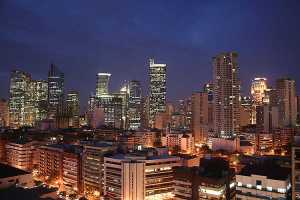
Makati is the financial capital of the Philippines. It houses various embassies and center of international affairs and is noted for its cosmopolitan culture. The city ranked 2nd in financial performance , 5th as the best provider of public healthcare, 1st as the city with the most cultural and commercial ties locally and internationally and 2nd having the best infrastructure in the country.
3. Marikina City – 84.323
At number 3 with a rating of 84.323 is the “Shoe Capital of the Philippines” and one of the most populous and wealthiest city in the country today. Marikina City is a tourism and cultural hub of Metro Manila and a modernized city balanced by nature and its people. It is one of the healthiest and livable cities within the Asia-Pacific, a Hall of Famer for its cleanest and greenest city, most awarded city in Metro Manila and most competitive city in the Philippines. The people of Marikina are amongst the most disciplined in the Philippines. Marikina City is 1st among the cities having the best environmental programs, 1st as the best provider of public healthcare and programs, 3rd in having the best sports programs designed for the public and 1st as the best provider of quality public education.
2. Davao City – 84.804
At number 2 with a rating of 84.804 is Davao City. In the early 2000s, Davao City has been recognized as the most liveable city in the Philippines but in the recent years, it has been outranked by the other fastest growing and well performing cities in the Philippines. Davao City ranked 87th fastest growing city in the world by the City Mayors Foundation and 10th Asian City of the Future by the FDI Magazine. It is the most important financial and trade center and the richest city in Mindanao thus the nickname the ” Crown Jewel of the South”. It is the 5th best performing city financially, 2nd best city that caters the tourist with best natural attractions, 4th producer of young professionals, 9th in having the most cultural and commercial ties here and abroad, 1st in calamity safety index and 3rd in having the best infrastructure among the cities in the country.
1. Bacolod City – 85.183
Finally at number 1, we recognize the City of Bacolod as the MOST LIVEABLE CITY OF 2012. Here’s why; it may not be the best but the city is well represented in all of the indicators we have. Bacolod City ranks 8th in having the lowest crime incidence among the first class cities in the country, 3rd in giving the best environmental conditions to live, 2nd in having the best sports program for the public, 4th for historical and cultural significance, 2nd in having the best delicacies in the country, 4th for best tourist attractions, 3rd as best provider of quality public and private education both for primary and secondary, 4th in having the most cultural and commercial ties locally and inernationally, 6th in calamity safety index and the 4th best city in terms of its infrastructure. Bacolod is the capital of Negros Occidental province well known for its Maskara Festival celebrated every October. Like Iloilo City, Bacolod is also known for being very friendly thus the nickname the “City of Smiles” . In addition, the city received numerous awards and citations from different organizations for having one of the best infrastructure, stable economy, interesting culture and conducive environment.


